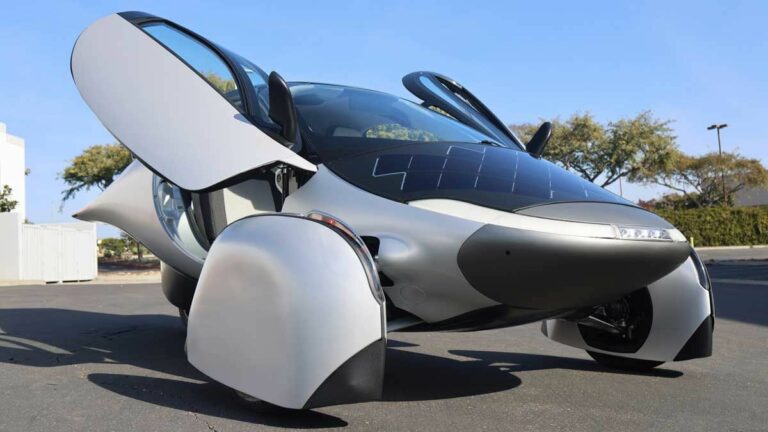Aptera’s Solar EV: Record-Breaking Efficiency Meets Production Uncertainty
Aptera Motors, a Southern California-based startup, has reached a significant milestone in its quest to redefine personal transportation. Recent validation testing in the Mojave Desert showcased remarkable efficiency for its solar electric vehicle (sEV). Despite these advances, skepticism lingers about whether the vehicle will ever move beyond the prototype phase and into production.

These tests, conducted in February 2025, validated Aptera’s claims of exceptional aerodynamic design and energy efficiency. The company, with more than 50k preorders, has garnered attention for its ambitious vision of a solar-powered future. However, as Torque News noted in November 2024, Aptera faces the challenge of bringing its vision to fruition. Aptera’s design features a three-wheeled, ultra-lightweight construction optimized for efficiency and minimal energy consumption.
Groundbreaking Efficiency and Coastdown Tests
A key metric highlighted in the February testing update was the coastdown test, which measures how efficiently a vehicle moves through air and road resistance. Aptera’s sEV took over three minutes to decelerate from 60 mph to a complete stop, even while traveling uphill — a result Aptera says is “significantly more than any other vehicle on the road today, gas or electric.”
Steve Fambro, Co-Founder and Co-CEO of Aptera, expressed his excitement: “Our validation testing confirms that we’re on track to achieve our target energy consumption of roughly 100 Wh/mile, unlocking a level of efficiency that makes solar mobility possible in a way never seen before.”
“100 Wh per mile is crazy,” said one commenter on a YouTube announcement. “A standard house outlet would give you about 14-15 miles per hour charging, which is a dream. Ten hours overnight will charge more than I drive in half my work week, not including the solar panels that are built into the car. I hope they get this vehicle into production someday.”
Aerodynamic Validation and Highway Testing
In addition to coastdown tests, Aptera performed aerodynamic tuft testing. Engineers also performed extended highway drive cycles covering hundreds of miles while monitoring energy consumption in real-time. The results aligned closely with mathematical predictions, validating the vehicle’s design.
Fambro stated, “What started as Matlab calculations is now coming to life on the road. This is the future of transportation.”
Public Sentiment: Hope and Frustration
While many remain enthusiastic, others have voiced concerns about delays and uncertainties around production. One commenter wrote, “Never had a car in my life… You guys will be my first ever car and that says so much about y’all considering how I feel about driving.” Others have been more critical: “Sad this product has continued to be vaporware for so damn long,” said one commenter. This reflects broader concerns, as Aptera has yet to commit to any firm delivery dates despite securing funding.
The appeal of Aptera extends beyond the U.S., with global interest from those seeking efficient, nature-inspired designs. Conversely, some note that front wheel exposure and charging port design may create challenges for different markets.
What’s Next for Aptera?
Aptera is developing its next validation vehicle with refinements. Future tests will include a full-range evaluation and assessments of real-world solar charging capabilities.
As one follower noted, “It’s perfect—just start producing it already.”
While Aptera has made impressive advancements, the company must overcome funding and production scaling hurdles.
Torque News has previously noted how the prolonged delays leave many wondering whether the Aptera will ultimately deliver on its promise.



